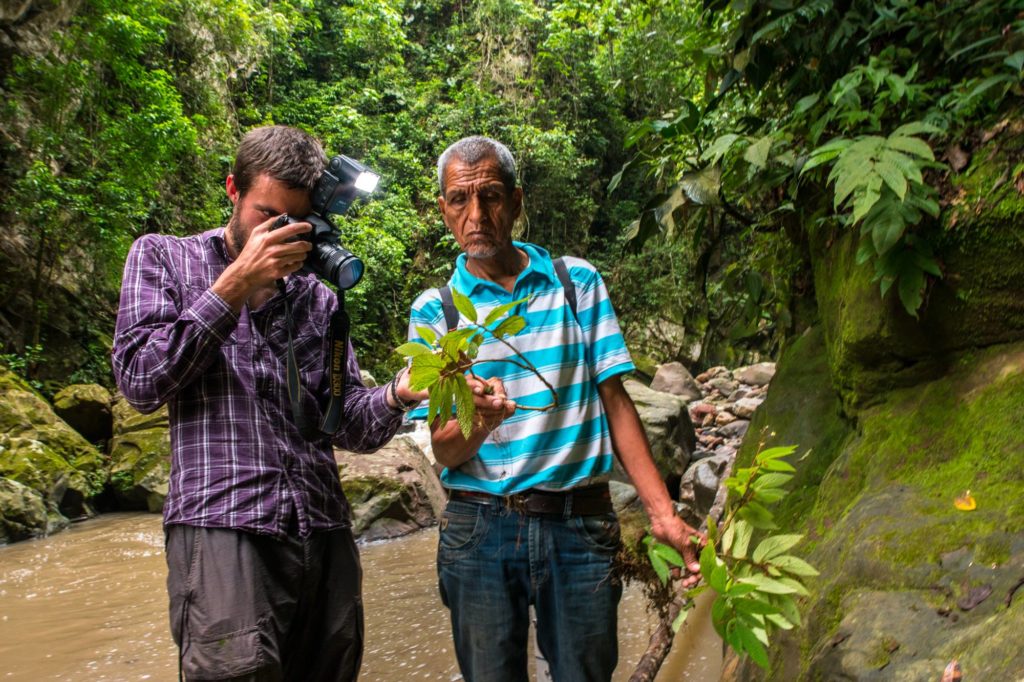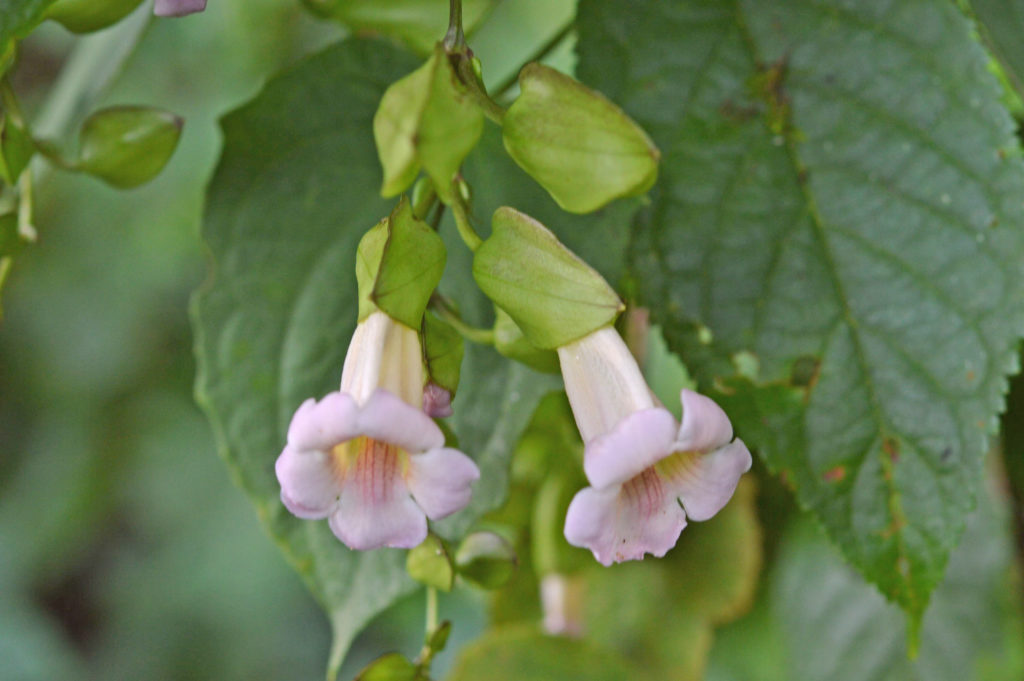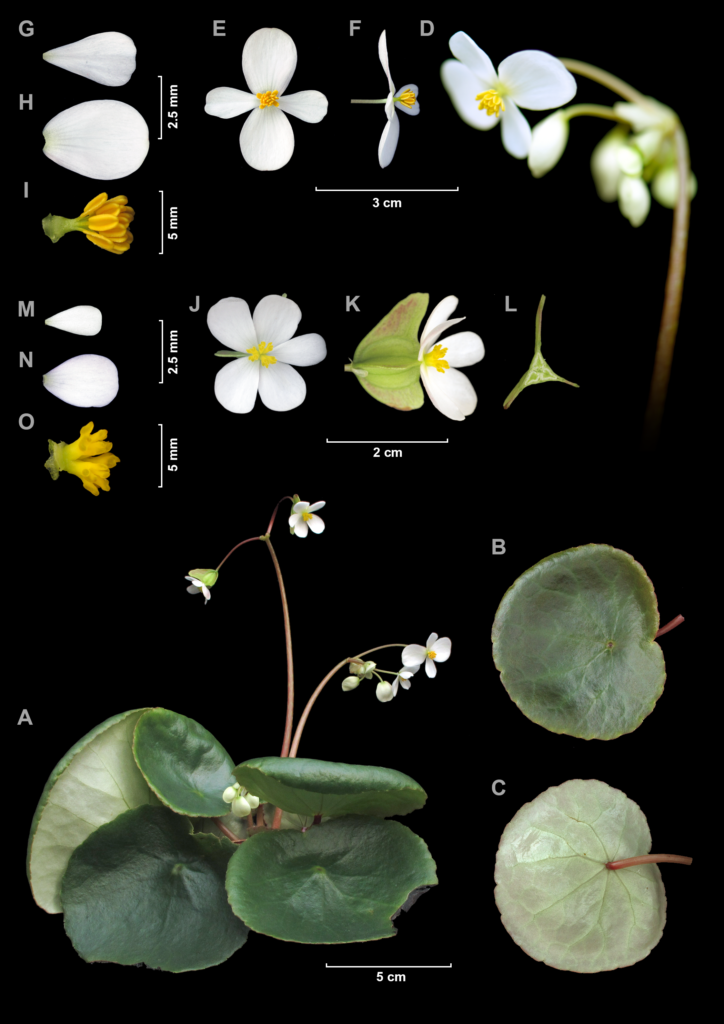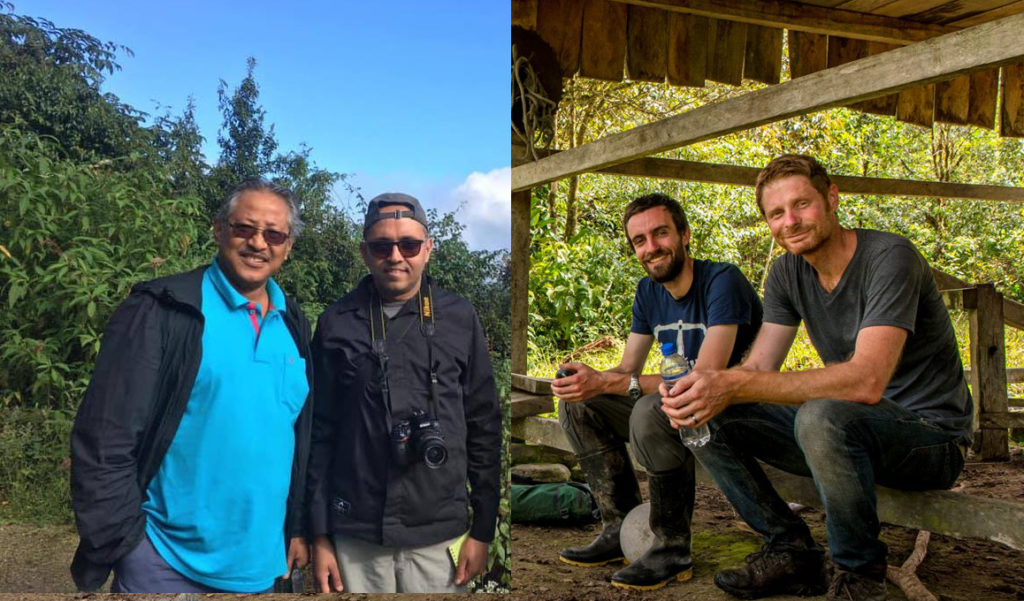
Most people’s idea of discovering a new plant species for science is a botanist rounding a corner in a remote part of the world and spotting an unusual flower they have never seen before. This does happen, but new species are found in many ways. Sometimes it is a slow realisation in the field or by looking at hundreds of specimens . In the modern world, this is increasingly happening online via blogs or social media!
Citizen scientist spend a huge amount of time taking photos and posting them on different social media. Scientists from RBGE have recently described two new species originally photographed by citizen scientists: Thunbergia kasajuana Bh.Adhikari & J.R.I.Wood published in Kew Bulletin and Begonia joshii Moonlight in Edinburgh Journal of Botany.

Thunbergia kasajuana is named after Saroj Kumar Kasaju, a retired director of Nepal airlines who first found the species in Central Nepal. Saroj is a talented and enthusiastic photographer and has collection of photographs of more than 1000 Nepalese plant species. He is also an active member of efloraofindia, posting more than 500 posts in a single month. I (Bhaskar Adhikari) met him through efloraofindia in 2016 when he requested I identify some Berberis photographs. In July 2017, I came across some of his Thunbergia photographs, and I asked him whether he would be able to make some specimens. We met in November 2017 during a trip to Nepal, and we visited the forest to collect and look at this species. Later in 2018, he visited again to collect flowering specimens, and took detailed photographs of floral parts. In October 2018 we visited again to try and find some more populations, and we made some more specimens. I described this species with John RI Wood at Oxford University and was delighted to name this species after Saroj Kasaju. We are also thankful to efloraofIndia, and in particular J.M. Garg for making this connection.
I (Peter Moonlight) met Josh Richards in 2016 after seeing some photographs he had posted on the Facebook group Planet Begonia. Josh is an American naturalised in Peru and earns his living as a wildlife guide. His guiding takes him to some of the most botanically interesting parts of Peru and Josh is always keen to photograph and identify the plants and animals he finds. I contacted Josh after seeing some images of begonias he could not identify. Josh joined me on my next fieldtrip, and we were able to collect and identify many of these species.

Fast-forward a year and Josh sent me a message on Facebook. He had seen a tuberous Begonia species in northern Peru that he did not recognise. It was immediately obvious to me that was a new species. As I was due to fly to Peru in 2018, we arranged to collect the new species together. We managed to find the species fruiting in a pristine Andean dry forest but there were no flowers! Luckily, we managed to collect enough seeds to grow the plants in the RBGE glasshouses. It flowered surprisingly quickly thanks to our expert horticulturists, and I was able to describe the species as Begonia joshii Moonlight in Edinburgh Journal of Botany in collaboration with Asunción Cano from the Peruvian National herbarium. It was a pleasure to name this species after Josh Richards and with luck he may stumble across another new species somewhere in Peru.
These examples show how important is the collaboration between citizen scientists and taxonomists to explore the wonder of the nature. We salute the citizen scientists who are continuously contributing on our understanding of the natural world!
Bhaskar Adhikari & Peter Moonlight

